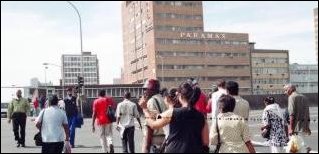The Foot Victims of Our Roads
Pedestrians hit by a vehicle travelling at 65 kph have a survival chance of only 10 per cent, and if they do survive, the injuries will be serious and probably result in permanent disability. At a little over this speed, there is almost no chance of survival. This is why the majority of pedestrians hit by vehicles on national roads die. The law states that no pedestrians should be on freeways, but sometimes roads are built without taking into account the needs of local communities. They often have settlements on one side of the road, and schools, taverns, places of employment and shops on the other.
Pedestrians will not walk several hundred metres to get to an overhead bridge to cross. They will chance it by running across the road. When designing roads, engineers need to take into account the requirements of pedestrians, particularly near schools, shops and bridges. This is especially necessary in rural areas where road verges are not weather proof. In wet weather, mud and wet grass cause people to walk on the roads, most of which are not lit. Many people are not able to gauge the speed of an oncoming vehicle over a distance of more than 150 metres. When vehicles are travelling fast, this means that one has only seconds to react when danger threatens. This makes all pedestrians, especially those with little experience in traffic, vulnerable to death and injury. It is difficult to enforce proper pedestrian behaviour because people do not always carry identification documents. With the high crime rate, police also do not see the breaking of the law by pedestrians as a priority. It is also important to keep in mind that when pedestrian facilities are built, they are secure, safe, accessible, convenient, attractive and cost effective.
|
 ABOUT 40 per cent of people killed on South Africa’s roads are pedestrians.
This makes up a total of 4 000 deaths annually, and several thousand serious
injuries. This is the single largest group of road users who lose their lives,
and thus are the most vulnerable.
ABOUT 40 per cent of people killed on South Africa’s roads are pedestrians.
This makes up a total of 4 000 deaths annually, and several thousand serious
injuries. This is the single largest group of road users who lose their lives,
and thus are the most vulnerable.